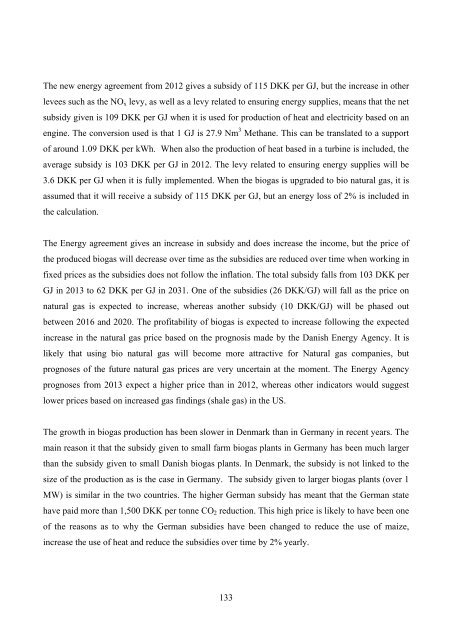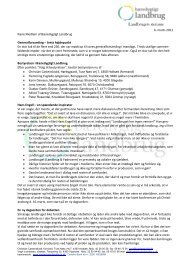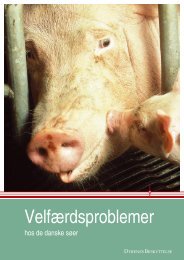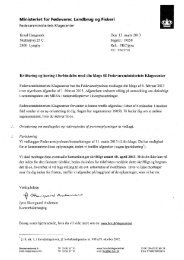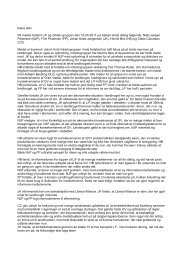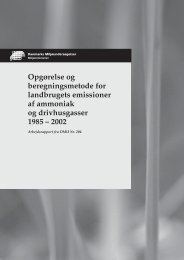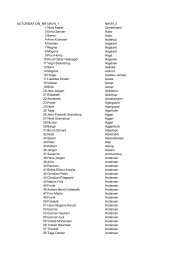Se rapporten her - Sickpigs.dk
Se rapporten her - Sickpigs.dk
Se rapporten her - Sickpigs.dk
Create successful ePaper yourself
Turn your PDF publications into a flip-book with our unique Google optimized e-Paper software.
The new energy agreement from 2012 gives a subsidy of 115 DKK per GJ, but the increase in ot<strong>her</strong>levees such as the NO x levy, as well as a levy related to ensuring energy supplies, means that the netsubsidy given is 109 DKK per GJ when it is used for production of heat and electricity based on anengine. The conversion used is that 1 GJ is 27.9 Nm 3 Methane. This can be translated to a supportof around 1.09 DKK per kWh. When also the production of heat based in a turbine is included, theaverage subsidy is 103 DKK per GJ in 2012. The levy related to ensuring energy supplies will be3.6 DKK per GJ when it is fully implemented. When the biogas is upgraded to bio natural gas, it isassumed that it will receive a subsidy of 115 DKK per GJ, but an energy loss of 2% is included inthe calculation.The Energy agreement gives an increase in subsidy and does increase the income, but the price ofthe produced biogas will decrease over time as the subsidies are reduced over time when working infixed prices as the subsidies does not follow the inflation. The total subsidy falls from 103 DKK perGJ in 2013 to 62 DKK per GJ in 2031. One of the subsidies (26 DKK/GJ) will fall as the price onnatural gas is expected to increase, w<strong>her</strong>eas anot<strong>her</strong> subsidy (10 DKK/GJ) will be phased outbetween 2016 and 2020. The profitability of biogas is expected to increase following the expectedincrease in the natural gas price based on the prognosis made by the Danish Energy Agency. It islikely that using bio natural gas will become more attractive for Natural gas companies, butprognoses of the future natural gas prices are very uncertain at the moment. The Energy Agencyprognoses from 2013 expect a hig<strong>her</strong> price than in 2012, w<strong>her</strong>eas ot<strong>her</strong> indicators would suggestlower prices based on increased gas findings (shale gas) in the US.The growth in biogas production has been slower in Denmark than in Germany in recent years. Themain reason it that the subsidy given to small farm biogas plants in Germany has been much largerthan the subsidy given to small Danish biogas plants. In Denmark, the subsidy is not linked to thesize of the production as is the case in Germany. The subsidy given to larger biogas plants (over 1MW) is similar in the two countries. The hig<strong>her</strong> German subsidy has meant that the German statehave paid more than 1,500 DKK per tonne CO 2 reduction. This high price is likely to have been oneof the reasons as to why the German subsidies have been changed to reduce the use of maize,increase the use of heat and reduce the subsidies over time by 2% yearly.133


